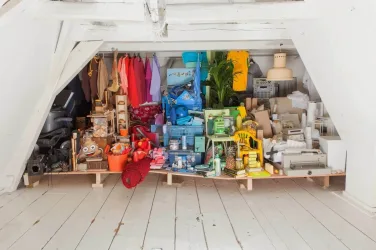
By Mimi Greenwood Knight
“Because life is fueled by the energy captured from the sun by plants, it will be the plants that we use in our gardens that determine what nature will be like 10, 20, and 50 years from now.”
If you’ve found it challenging to keep your yard looking pretty during the summer, maybe it’s because you’re working against nature instead of working in partnership with it. When you opt to plant the things that naturally grow in your area of Texas, you’re saving yourself time, work, money, and heartache, and being kind to Mother Earth.
“Native plants” grow naturally in your local climate, under local soil conditions, and with your local rainfall. They’re plants that naturally provide nectar, pollen, seeds, and nesting areas for butterflies, insects, birds, and wildlife, making them a vital part of your area’s larger natural ecosystem. Plants that don’t naturally occur in your environment can require copious amounts of work on your part, as well as water, fertilizer, and insecticides to keep them alive and have little or nothing to offer native wildlife species.

Native Plants are Stronger and Healthier
Plants that are native to your area are more likely to establish quickly and will just naturally be hardier and healthier. These plants have evolved over thousands — even millions of years to live in your area and have learned to thrive under what can often be brutal conditions in Texas. They grow in harmony with your environment, soil, water supply, and seasonal weather. Their root systems are deep, and their stems and leaves are built to handle harsh sun or buffeting winds.

Native Plants Create Wildlife Habitat
Plants in their original environment can create natural habitat for wildlife that wants to live in your yard, which is beneficial to the environment and adds excitement to your outdoor space. Who doesn’t love to sip their morning coffee while watching bees, birds, and butterflies flit about their landscape or enjoy a glass of wine amid the lighting bugs and tree frogs at night? Native plants also create homes for small animals and microscopic organisms in the soil, all of which have jobs to do, creating a symbiotic relationship within your yard.
Native Plants are Earth-friendly
Not only do native plants require much less water, fertilizer, and pesticides, but they can also help prevent water run-off in your yard and improve air quality. They may also reduce your carbon footprint by eliminating the need for mowers and other yard equipment. And they can pull and store excess carbon.
Native Plants are Lower Maintenance
If you feel like your yard always needs something from you, native plants can certainly help. The long-term upkeep of native plants costs dramatically less than that of a traditional lawn or non-native plantings, and they require much less time. The EPA estimates that over a 20-year period, the cost of maintaining a native habitat is $3,000 per acre compared to $20,000 per acre for non-native lawns and/or plants.

Native Plants Add Intrigue
Your native garden can be whatever you want it to be from a sculpted, formal space to a wild native prairie. Native plants provide all the colors, textures, varying heights, and bloom times you can get from non-natives for a stunning backyard display throughout every season.
“Wherever I go in America, I like it when the land speaks its own language in its own regional accent”
Native Plants that Love North Texas
- Climbing Prairie Rose
- Carolina Jessamine
- Coral Honeysuckle
- American Beautyberry
- Yaupon Holly
- Wax Myrtle
- Inland sea oats
- Mexican feather grass
- Indiangrass
- Black-eyed Susan
- Prairie Verbena
- Drummond Phlox
- Blackfoot Daisy
- Butterfly Milkweed
- Lanceleaf Coreopsis
- Cut-leaf Daisy
- Indian Blanket
- Mexican Hat
- Blue Mistflower
- Purple Coneflower
- Sky Blue Sage
- Texas Star Hibiscus
For a longer list, visit Denton County Master Gardener Association at DCMGA.com
Native Plants that Love SOUTH Texas
- American Beautyberry
- Texas Indian Paintbrush
- Butterfly Daisy
- Whiteleaf Indian Mallow
- Crossvine
- Trumpet Vine
- Star Thistle
- Partridge Pea
- American Century Plant
- Blue Mistflower
- Bellflower Clematis
- Golden Tickseed
- Drummond’s Dogwood
- Prairie Lily
- Carolina Larkspur
- Rattlesnake Master
- Coralbean
- Bee Brush
- Indian Blanket
- Prairie Verbena
- Maximilian Sunflower
- Coral Yucca
For a longer list, visit The Lady Bird Johnson Wildlife Center website at Wildflower.org










